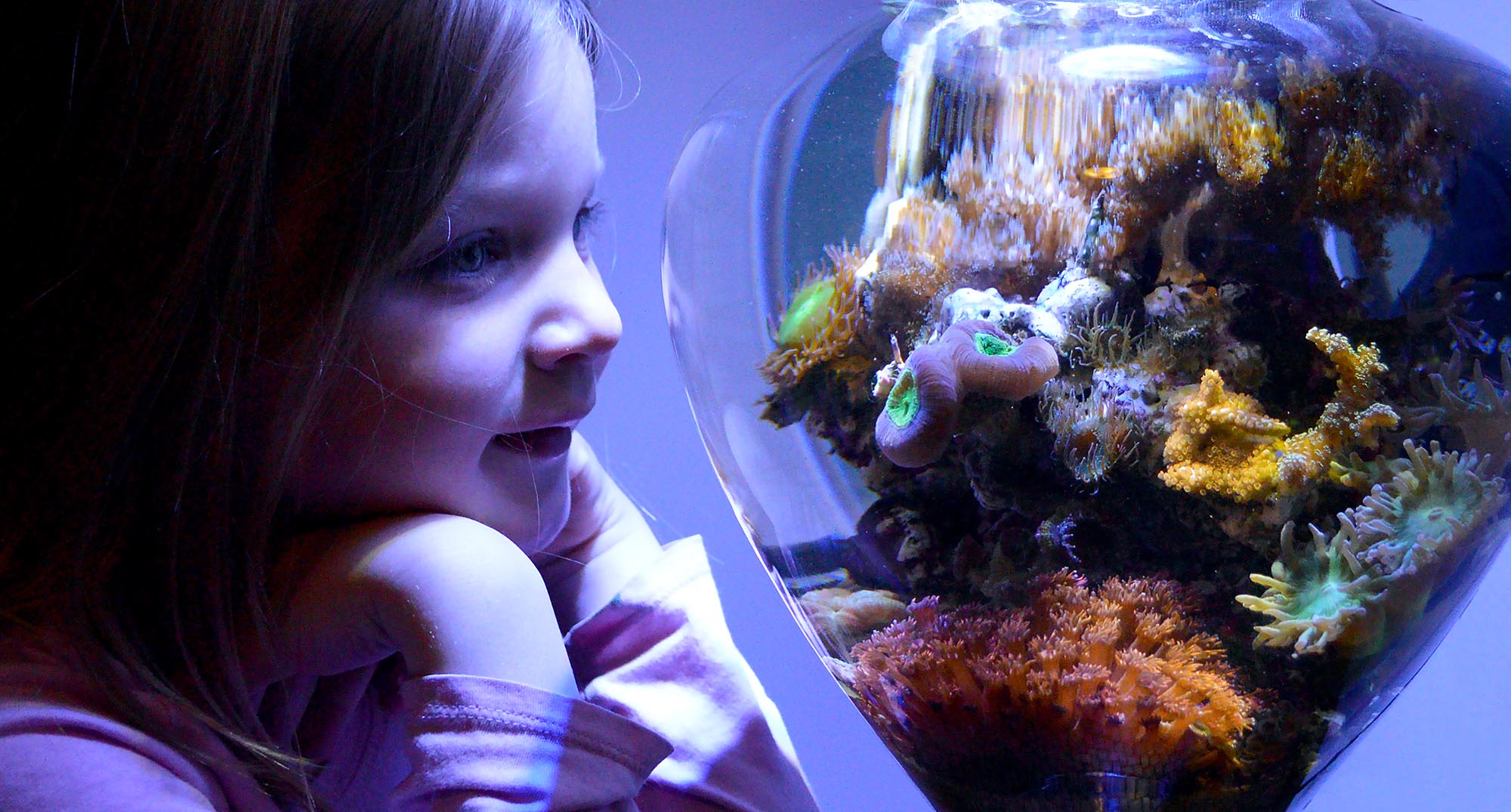
My daughter AJ and the vase reef, 15 months since a similar photo was captured. My how they’ve grown!
The next time you’re scraping the glass, trying to clean off that stubborn coralline algae, maybe break out the magnifying glass first. That constellation of pesky spots might be worthy of investigation. Before you literally wipe out all the life eager to colonize every glass surface of your reef tank, a closer look might be in order.
Such was the case recently as I prepared to give my 1.25-gallon vase reef (inspired by CORAL’s Micro Reefs Issue) a long overdue algae scraping and glass cleaning. It had been over six weeks since the last 100% water change, and at least a few weeks since a once-over with the Two Little Fishies Nano Mag. A cleanup crew of Blackfoot Trochus snails and a small, opportunistic Limpet species, have kept algal growth in check since the tank’s establishment. Coral growth has been enthusiastic, but coralline algae growth never seems to have managed to take off.
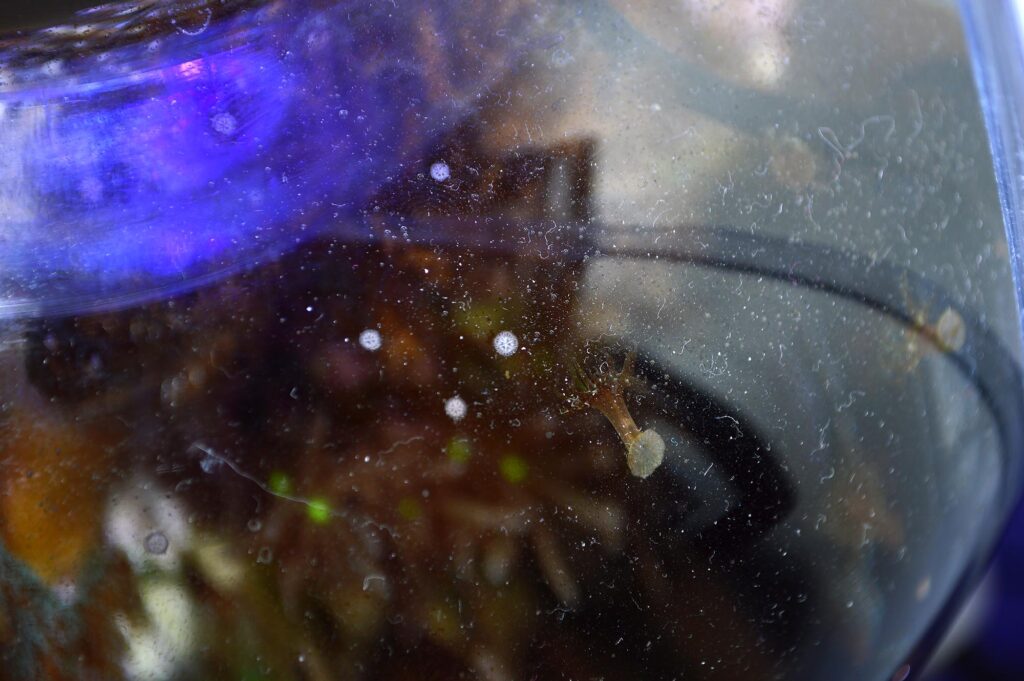
The “proof of concept” Vase Reef isn’t even a year and half old yet. Curious new white spots on the glass seemed to be a cause for pause.
So when I spied some small white spots on the glass, at first I thought “great, finally, coralline algae!” Not that this tank seems to need any, but I think we all still take the growth of coralline algae as a good sign. But as I scraped away the first few white spots, they were, shall we say, extra crunchy.
The white spots on the glass were mainly concentrated on the upper, inward curving portion of the vase reef’s glass; effectively this life is growing on the underside of a transparent, overhanging surface. So whatever it is I was looking at, technically I was looking at the backside.
Examining these spots with the naked eye revealed that they didn’t quite look like typical coralline algae. But between the generally poor quality of the glass and the additional distortion created by the curvature, even trying to observe these spots from “above”, by looking through from the other side, proved difficult. But it was pretty clear that this wasn’t a purple or pink coralline algae. There appeared to be a white base and maybe a brown spot or two on them.
I turned to my Nikon DSLR and snapped several images at higher magnification. Once I started looking through the photos, it became clear that there was some sort of structural organization to whatever was growing in the glass.
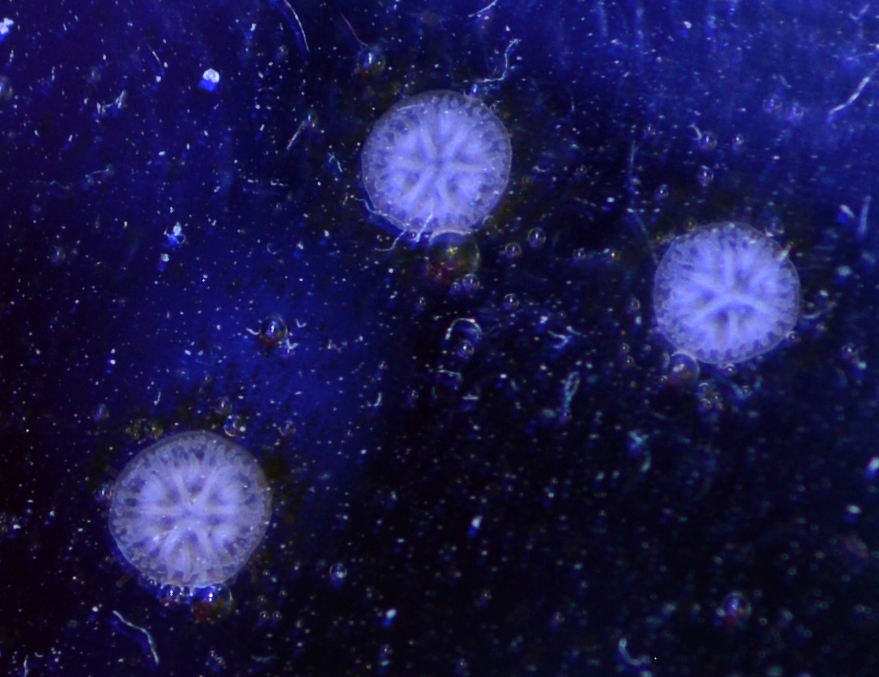
Shown here tightly cropped but at the original resolution, the structural organization of this lifeform becomes very clear.
It was at this point that I immediately sent the above photo to a few of my reefkeeping friends who specialize in the sexual propagation of corals. I wasn’t entirely sure, but I had a strong suspicion that I was looking at recently settled baby stony corals in my vase reef.
But before I even heard back, I found this photo in the group, and any doubt left my head.
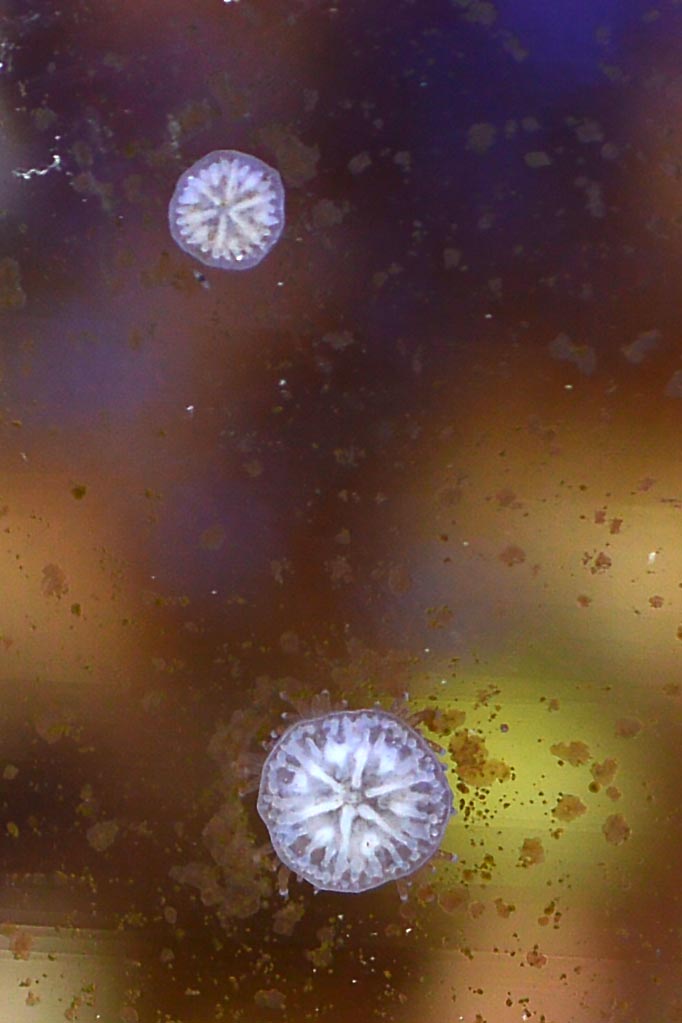
Two recently settled corals on the glass of my Vase Reef. The lower, larger coral, is readily identified by the multiple polyps whose tentacles are visible around the periphery of the coral’s base.
Those tentacles, clearly visible on the periphery of that last white circle, erased any doubt; these are baby stony corals.
So the question now shifts – what type of coral are we looking at? That was harder to say. Frankly, I would have presumed that most if not all of the corals in the vase reef are not large enough to be sexually mature. Additionally, there really aren’t any corals that could have genetically distinct mates of the same species in the aquarium. Furthermore, I don’t provide any seasonal manipulation of lighting or temperatures, which is often thought necessary to stimulate the coral reproductive cycle.
The most likely candidate was the relatively large Pocillopora damicornis which took over most of the upper portion of the reef. Back when the reef was started, there was just one small ping-pong-ball-sized frag of this coral present and a second broken off piece mounted separately. Since that time, the two frags grew together and merged, and the colony is nearly fist-sized and has already yielded several frags. A well-known “brooder,” Pocillopora seems a likely candidate.
The appearance of random Pocillopora corals, spawned in home aquariums, isn’t even all that surprising these days. In some instances, if the coral is particularly successful at spreading, Pocillipora can even come to be viewed as a nuisance or pest. The odds were good that I had simply had a successful brood spawning in my tiny vase reef.
But is there anything else that could surprise us?
I had to think about the Caulastraea spp., a.k.a. Candy Cane or Trumpet Corals. While these can form large colonies, the individual polyps are not connected, which begs the question if an individual polyp can be sexually mature even if it is all by itself, or just a few in a cluster. I recently had to hack one of the two Caulastraeas down by 75% to start it over before it grew into and fused with the glass of the vase, and there are two distinct varieties in the tank (I suspect they are representatives of different species).
Two other corals have grown considerably in size over the past year or so. While I started the reef with two single-polyp frags of Duncan Coral (Duncanopsammia axifuga), one was removed and donated to our zoo reef aquarium project, and the other has grown into a several-polyp colony. But if I’m honest, I secretly hope these are miraculous little offspring from the brilliant red Goniopora which has easily quadrupled in size since I purchased it.
For the moment, I’ll be sacrificing some clean glass to let these corals grow. I was very curious to see what they turn out to be, and how they turn out considering that most of them are illuminated from their undersides! Whatever they wind up being, I think the vase-reef concept just jumped another hurdle with the appearance of “spawned” corals in this tiny body of water. I have to wonder if the use of only an air-feed to circulate the water was conducive to higher settlement rates and success than would otherwise be seen in a more typical reef aquarium.
Investigate Harder!
Having slept on this discovery, I awoke the next day knowing that if there were this many baby corals on the glass walls of the vase, surely there must be some settled out on the rockwork. While the tank was unlit, I searched with a flashlight but didn’t find much visible from the front of the tank. One tiny clump of perhaps a half dozen polyps did confirm my hunch.
The beauty of a reef tank in a vase that holds only 1.25 gallons (4.7 L) of liquid is that you can turn it around. Which is precisely what I did. It was then that all the answers were revealed.
The answer was definitive and immediate. These are absolutely baby Pocillopora. The interesting part, to me, is that once again, here we have several baby corals that have technically settled on an overhang of sorts. The heater leans outward from bottom to top, which means most all of these baby corals aren’t receiving direct light from the 12-watt Tuna Blue PAR 38 that illuminates the reef; they are only getting ambient light that is bouncing around, either off the glass itself or the white wall outside the tank. If you look closely, you can see that clearly, not all the babies have made it.
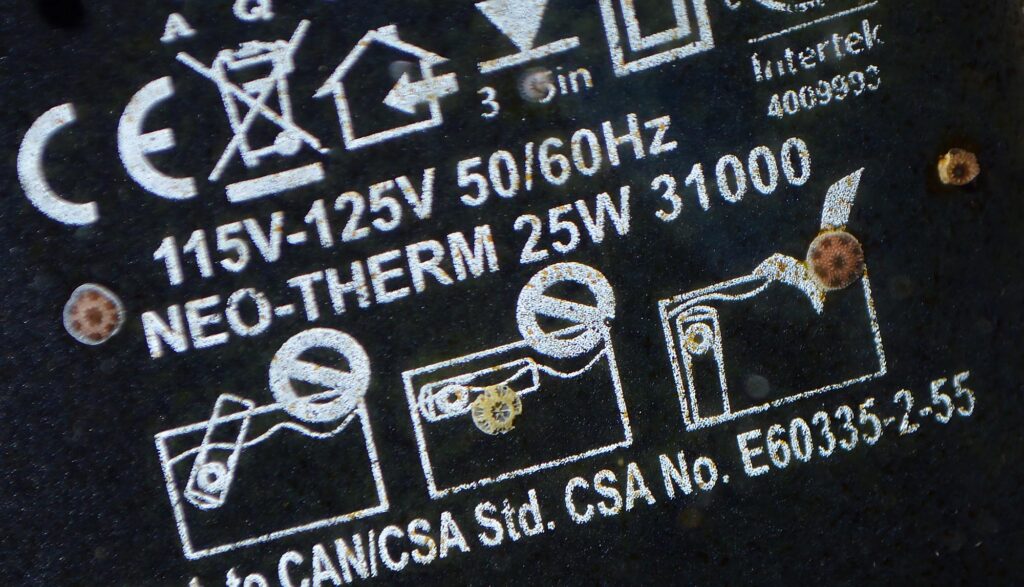
Surrounded by siblings that are faring better, the small Pocillopora in the lower center has seen better days.
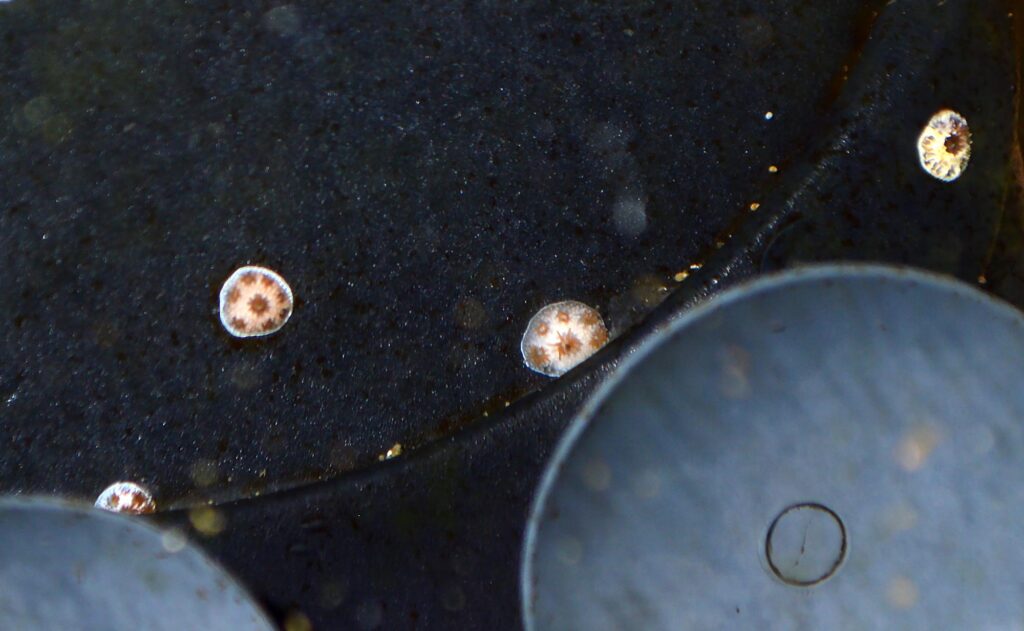
These baby Pocillopora settled out of the light, and near the heating element of the heater. Will they survive?
While all of these baby corals are exciting, they’re also a bit terrifying. Suddenly, it does appear that without warning, my Pocillopora may have gone from “most successful SPS in the vase reef” to “the biggest potential threat to my vase reef!” I can already blame this coral for the aggression-based demise of every Acropora frag I placed in the tank…who knew that Pocillopora have small, yet effective, sweeper tentacles? I didn’t, at least not until I saw them in action!
Sure, I can continue to “wipe out” the babies that settle on my glass (although I think I’ll leave some visible so we can see how an upside-down coral grows, at least for a little while). But if these babies can settle out on just about any hard surface and grow up like Dandelions in-between other corals, their future ability to wage war on their neighbors is a little bit disconcerting. My little vase reef may be a victim of its own success. Seems like it’s growing Pocillopora a little too well, considering we went from a tiny 1″ frag to babies everywhere in the span of maybe only 1.5 years or less.
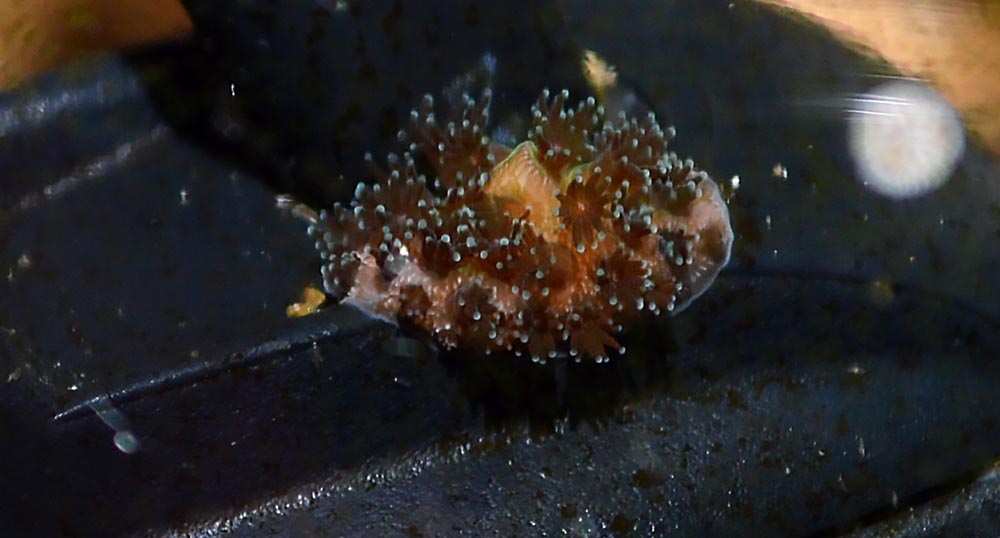
The largest baby Pocillopora I found was this lucky individual growing in the light on top of my Cobalt Neotherm heater.
How did this happen?
If you search the Internet for this, there are tales going back as early as the year 2000 of baby Pocillopora showing up in aquarist’s reefs; this is hardly news in that regard. While you’ll see the term “polyp bailout” associated with this coral, that seems to be a “last ditch” response to adverse conditions or disease, with polyps purportedly detaching from the parental colony and trying to go it alone. That doesn’t really seem to be what’s going on here.
As mentioned above, Pocillopora are well-known “brooders,” producing planulae larvae inside the parental coral which are then released to settle when the time is right. But how did I have one or more spawns of this coral with only one genetic individual in the tank?
The Mystery of Fatherless Babies
CORAL author and coral propagation researcher Samuel Nietzer handed me the answers. “Yes, definitely Pocillopora. It must release planulae pretty regularly—the recruit on the top [of the heater] is pretty large already. Looks pretty much identical to the ones we bred in Guam and I haven’t seen this in the other species I’ve had babies from. Makes also sense if there is only one parent colony since they can produce clonal planulae.”
And there is the important term: clonal planulae. As Nietzer shared with me, the ability for Pocillopora to asexually produce genetic copies of themselves as planulae has been documented in two separate papers (see the references below).
Reflecting on Success
All of this serendipitous coral “breeding” in my vase reef (can we call it breeding if there was no coral sex?) simply reaffirms that as aquarists, we’re on the right track. I venture that we are on the cusp of a sea change in coral propagation and with it, a profoundly different way of looking at the reef aquarium and its place in the larger aquarium industry and conservation measures.
For me, this latest chapter in the vase reef is a definitive piece of evidence that a tiny, air-driven pico reef can be a very successful aquarium. As I’ve shared with my friends in the past, this has been, by far, my most successful reef tank. It has also been my least problematic, although if you had asked me a year ago, I don’t think I would have envisioned a future where baby SPS corals were poised to overrun this tiny glass vessel.
Am I worried about the future of the vase reef? Maybe a little, but I’m also quite inspired. This latest development makes me want to set up a few “species-specific” vase reefs where I stock two or three individuals from only one species of coral….maybe some Seriatopora and Montipora of different cultivars. Maybe I can grow them to a point where they start freely spawning as well? Could it be that all it really takes is a large fish bowl, stable temperatures, clean water (via routine 100% water changes), good LED light, and an air feed? Could I literally one day breed Acropora in an oversized “goldfish bowl”? Maybe, maybe not, but someone ought to try and answer that question!
Perhaps the future of home-based coral breeding is much more simple than we think.
References
Yeoh S, Dai C (2010) The production ofsexual and asexual larvae within single broods of the scleractinian coral, Pocillopora damicornis. Marine Biology 157: 351–359
Stoddart JA (1983) Asexual production of planulae in the coral Pocillopora damicornis. Marine Biology 76: 279–284.

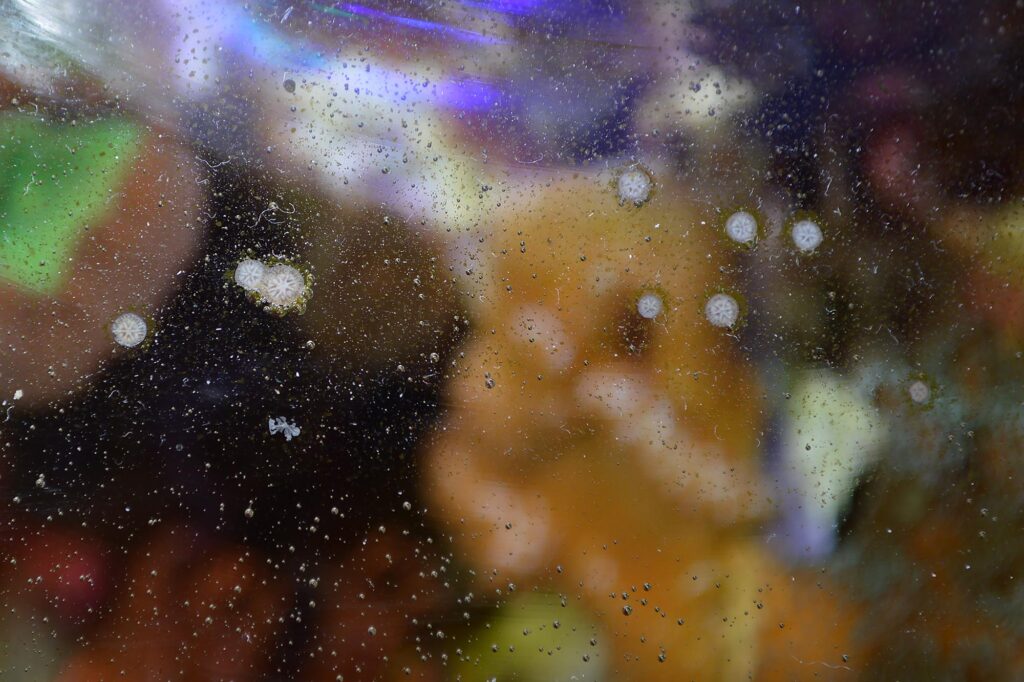
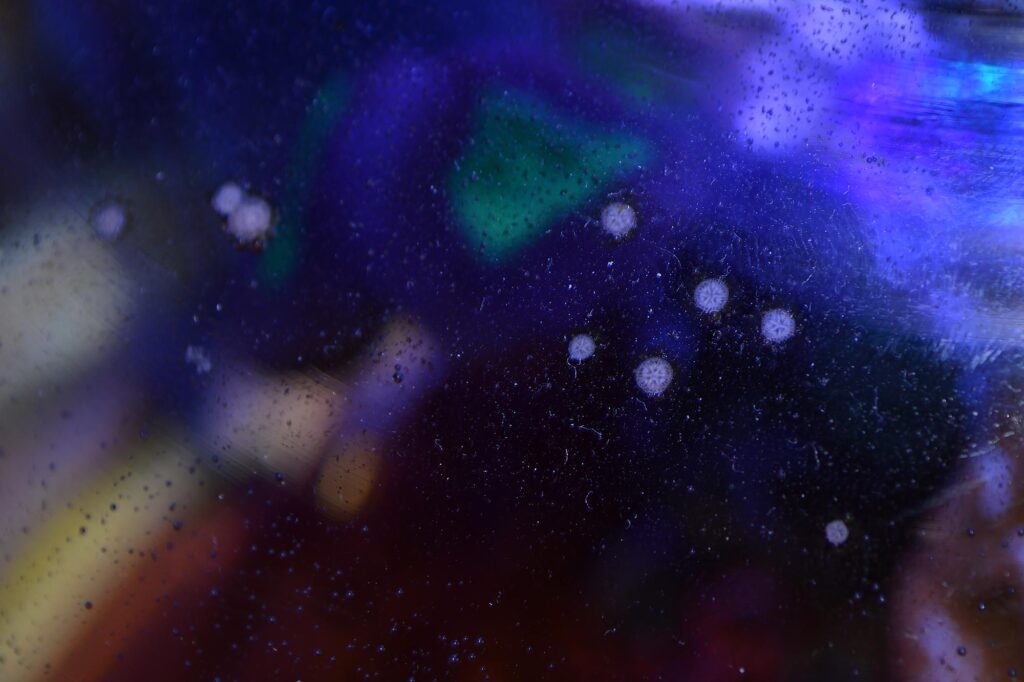
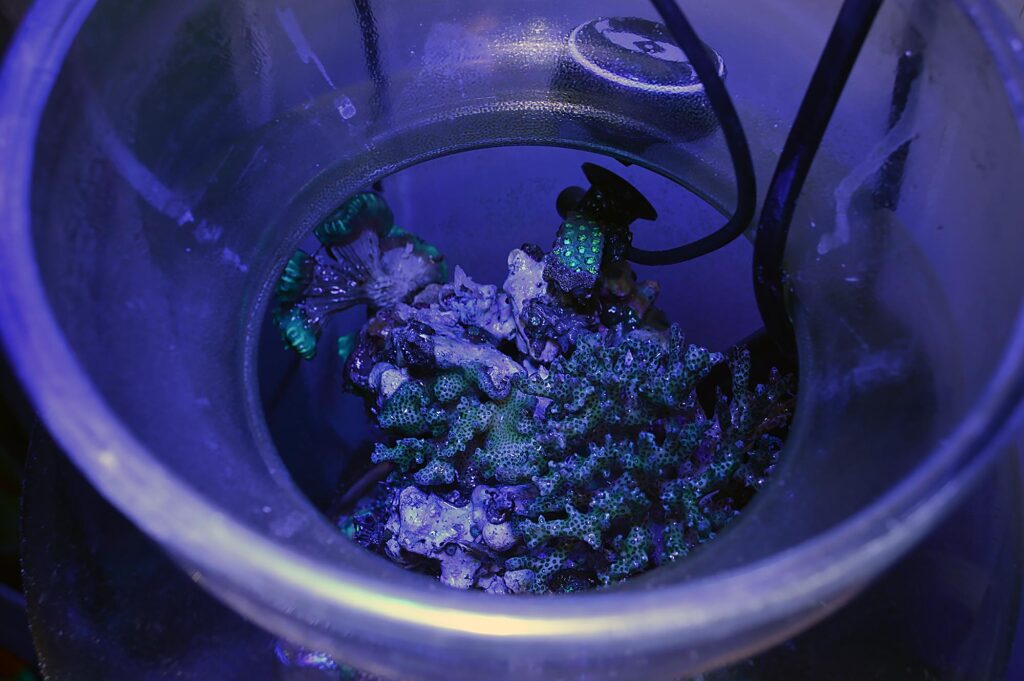
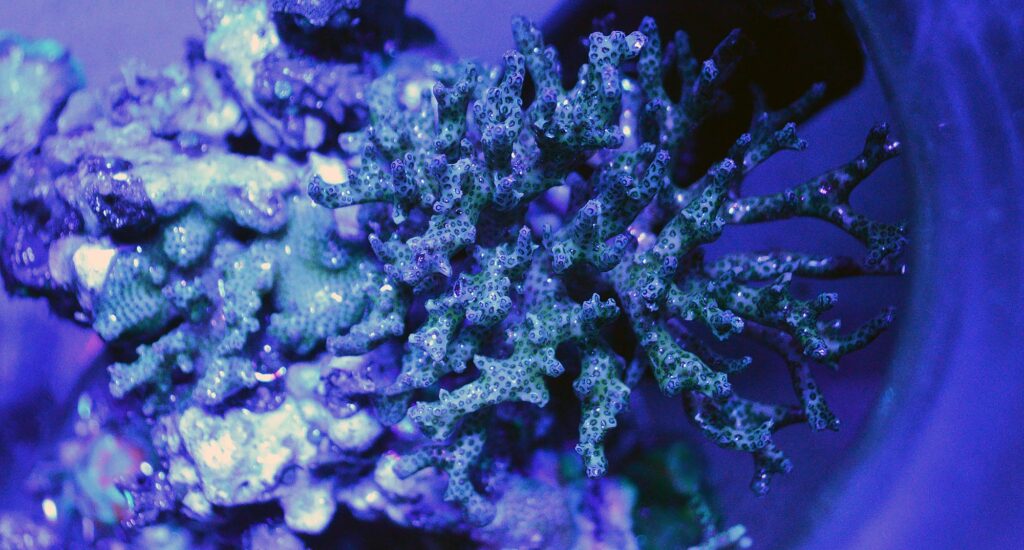
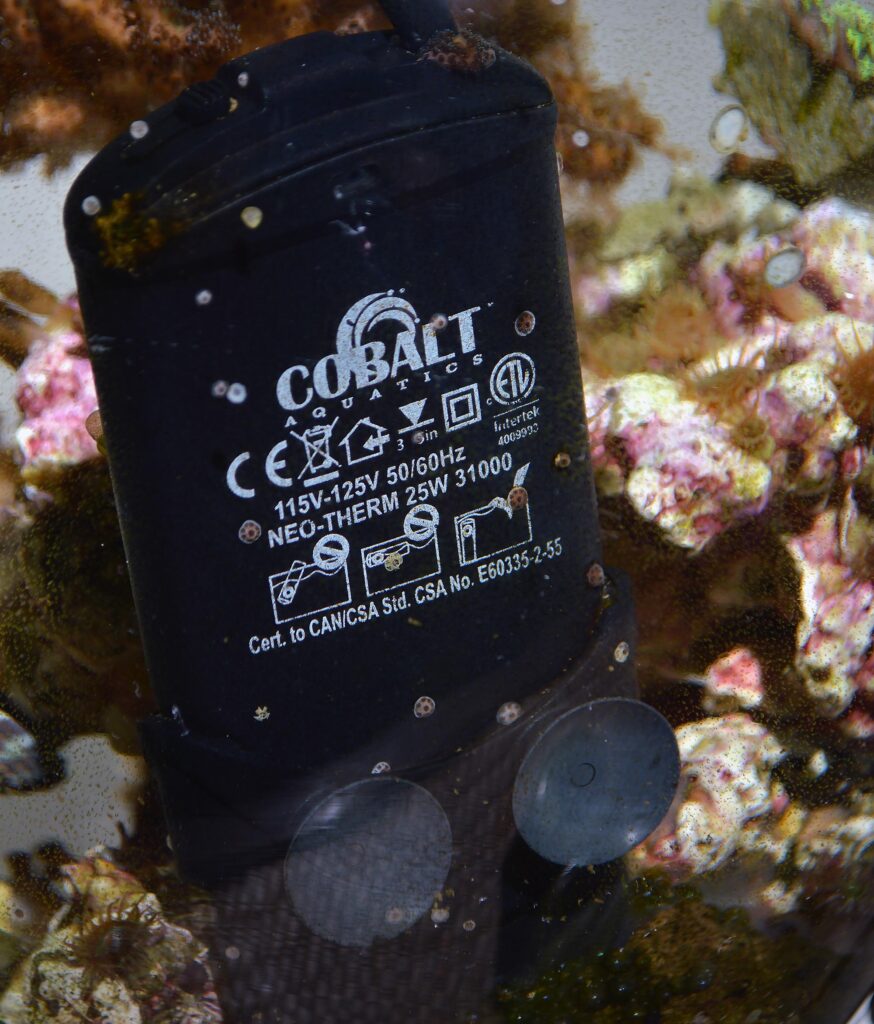





Wow. Small really is beautiful. Would you have known that this happened, had it happened in a larger tank?
I think over time, perhaps. I’d expect a lower recruitment rate in a tank with traditional filtration and pump-driven circulation, but once the successful corals reached a certain size, you’d be hard pressed not to acknowledge their presence. I know a local reefkeeper who had Pocillopora offspring show up in a standard-style 300-gallon reef, so it’s definitely a possibility for anyone keeping a Pocillopora. I’m really more excited about the concept of leveraging this to breed corals in small spaces. Why not spawn Monitipora digitata in a vase reef?
Seriously one of the coolest things posted on reef tanks this year 🙂 Kudos
Thanks Steve!